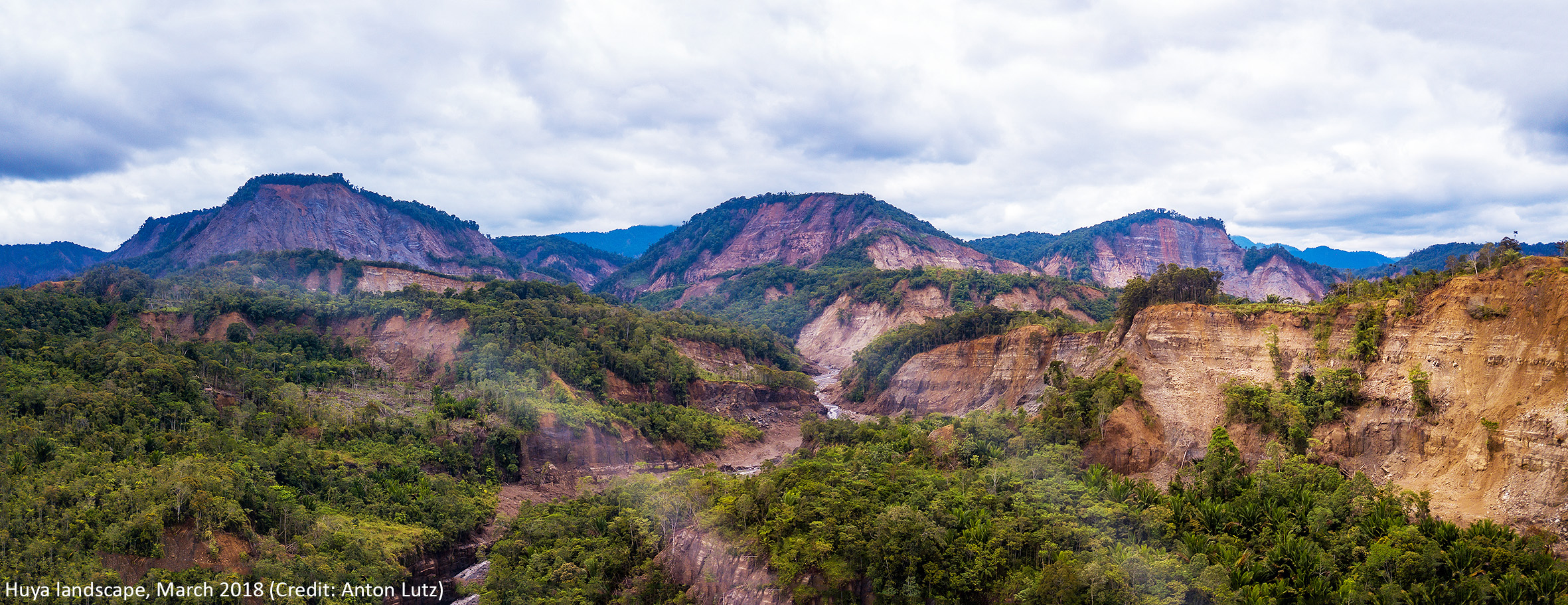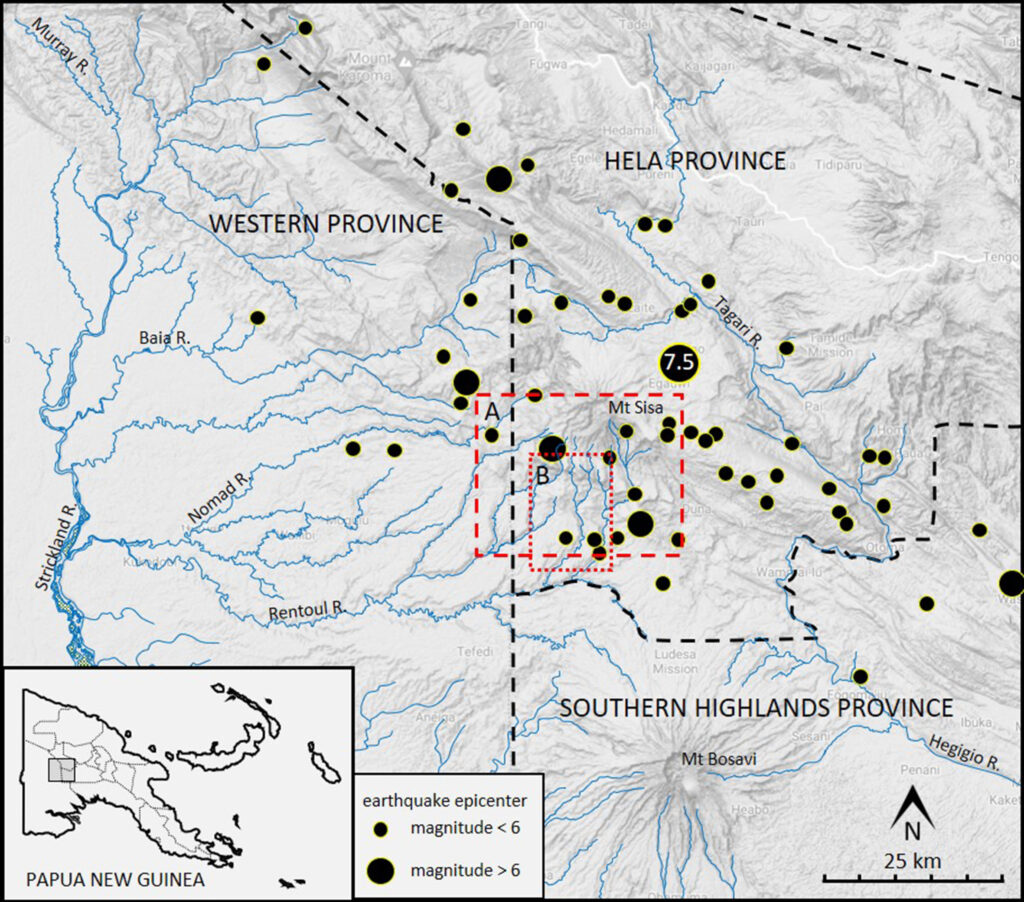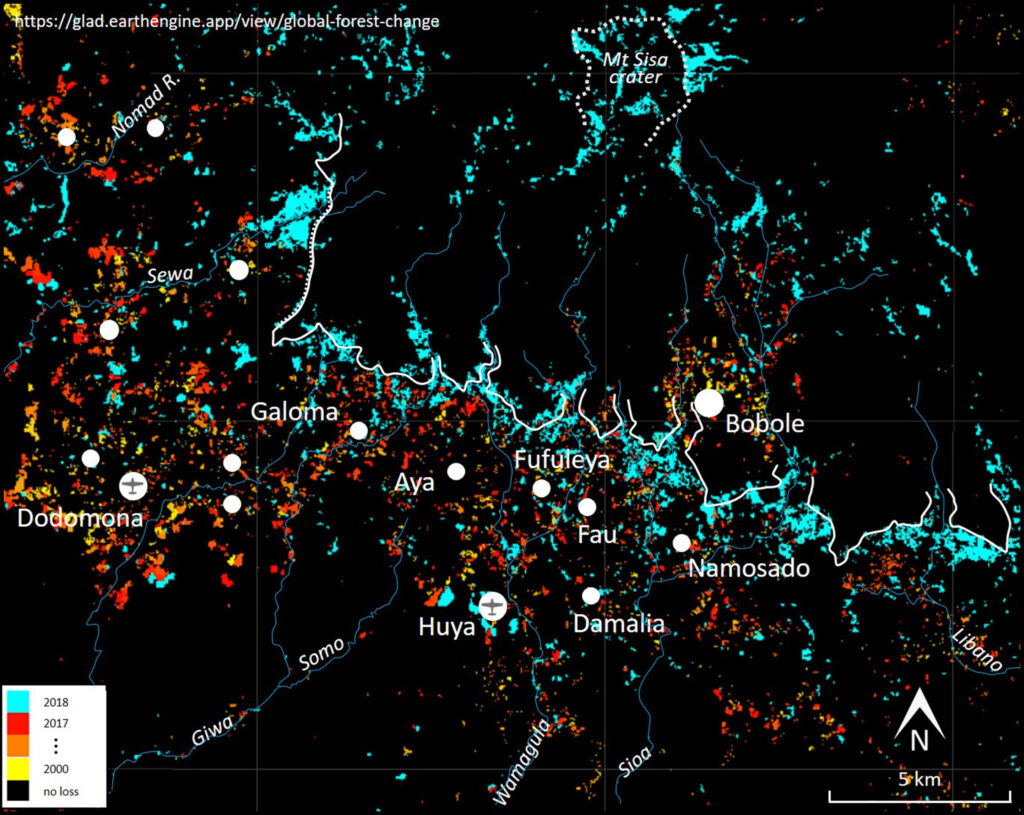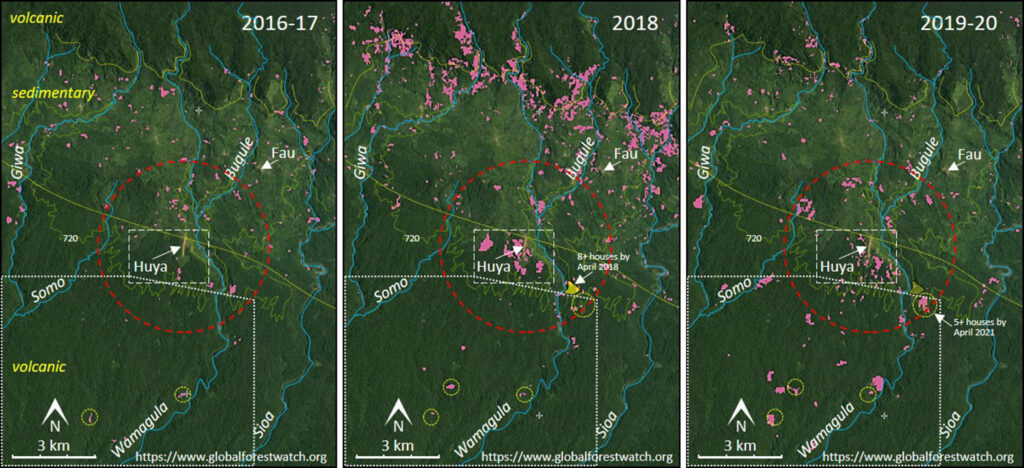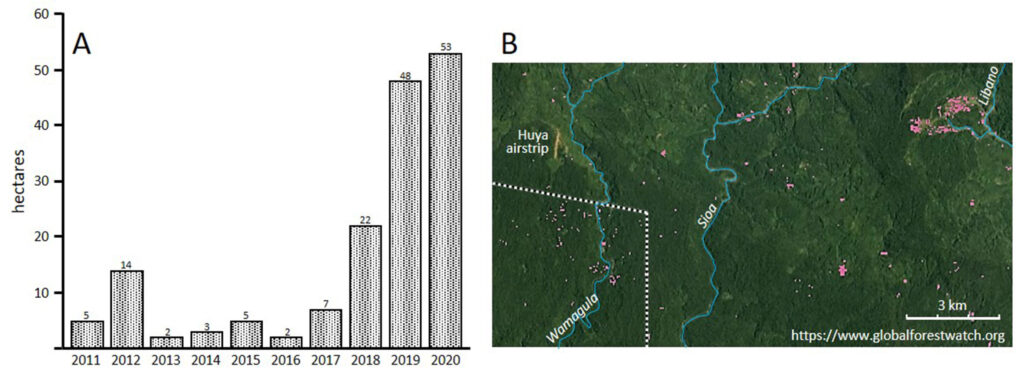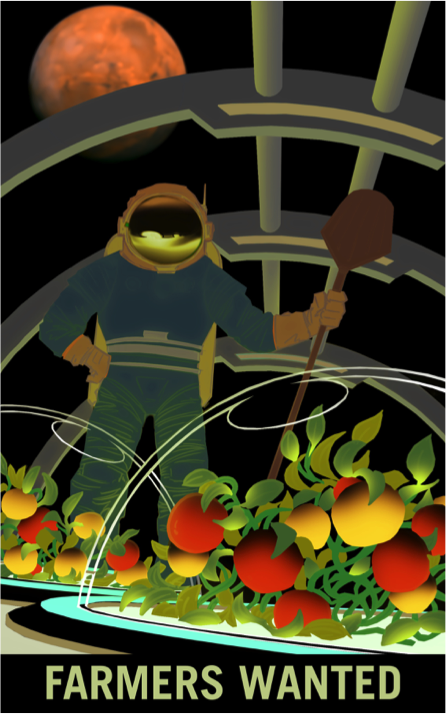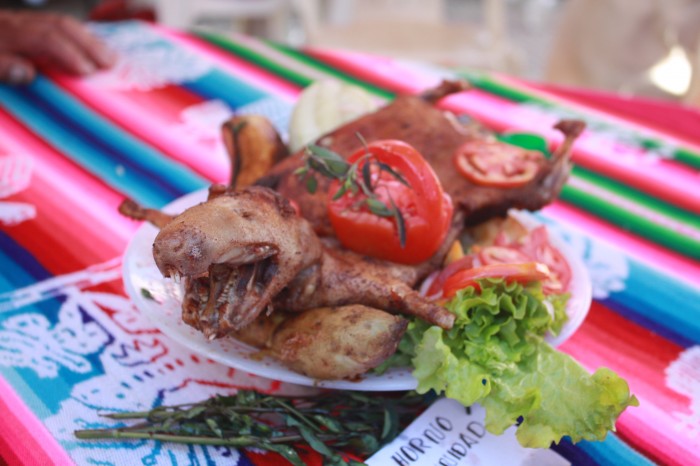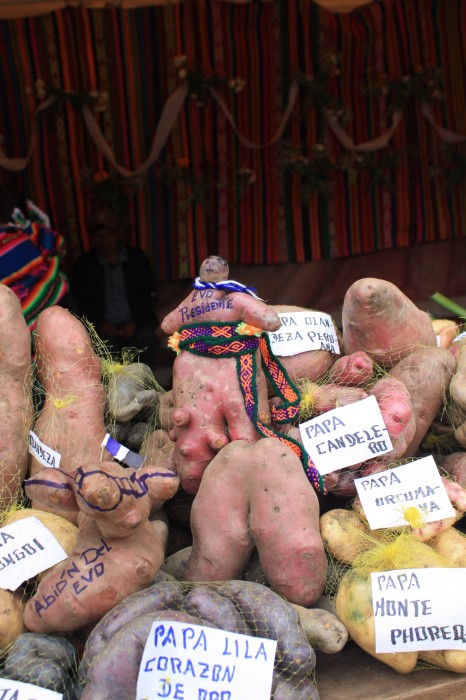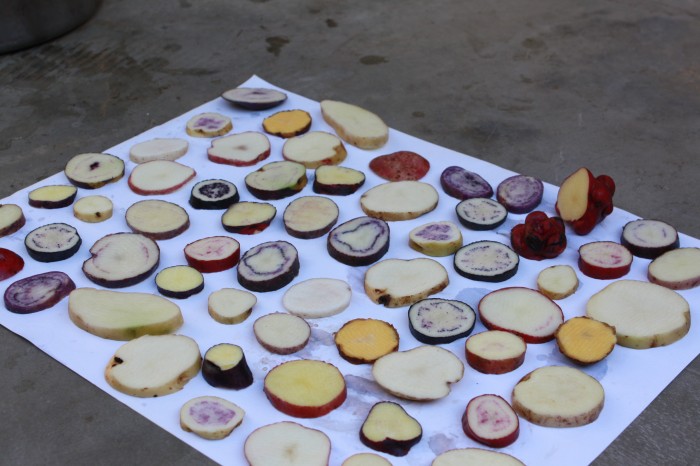Located in the Southeast of Mexico (Figure 1), the state of Chiapas is among the top 10 states in pesticides use (Bejarano González 2017). Since 2012, I have been conducting research in Chiapas on women’s reproductive healthcare. I collaborated with the Organization of Indigenous Doctors of the State of Chiapas (OMIECH in Spanish) to document the impact of reproductive health policies on Indigenous midwives’ practices. In rural areas, these women, who have acquired knowledge through their own experience of pregnancy birth and postpartum and/or trained with an older midwife, provide daily care to women and their families. As farmers, they are also acute observers of environmental change.
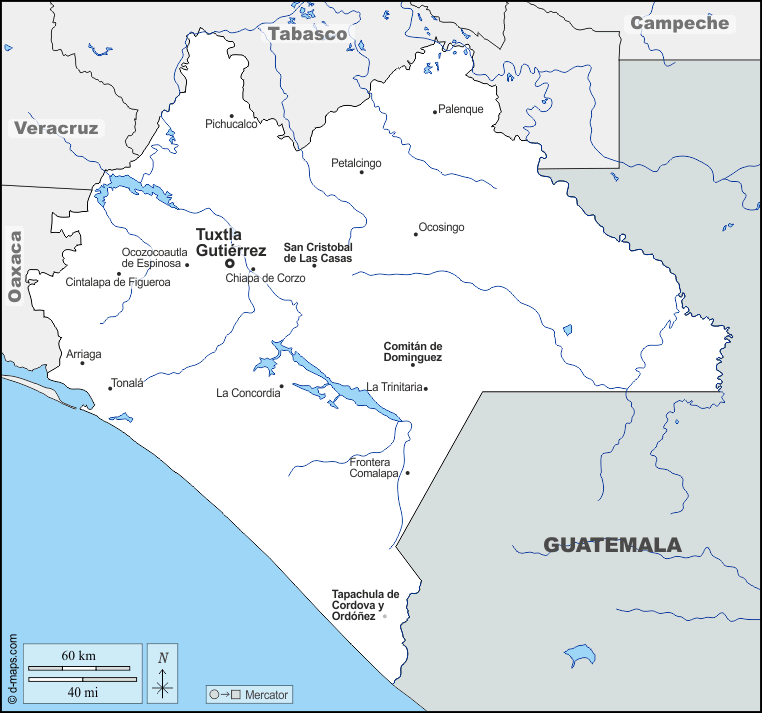
In May 2019, the town of San Cristóbal de las Casas hosted the First Mexican congress on agroecology. During the opening of the congress, voices in the audience started chanting, “Without feminism, there is no agro-ecology” (Figure 2). The group, made of a dozen women — researchers, activists, students, farmworkers, wanted to draw attention on the intersections between women’s rights and environmental sustainability. Later, during a roundtable, the founder of an “organic and feminist” coffee brand explained, “We need agro-ecology to be a choice for life (opción de vida). There can’t be agroecology if there is machismo, if there is violence, if there isn’t food on the table. Agroecology is a choice for our children’s lives.”
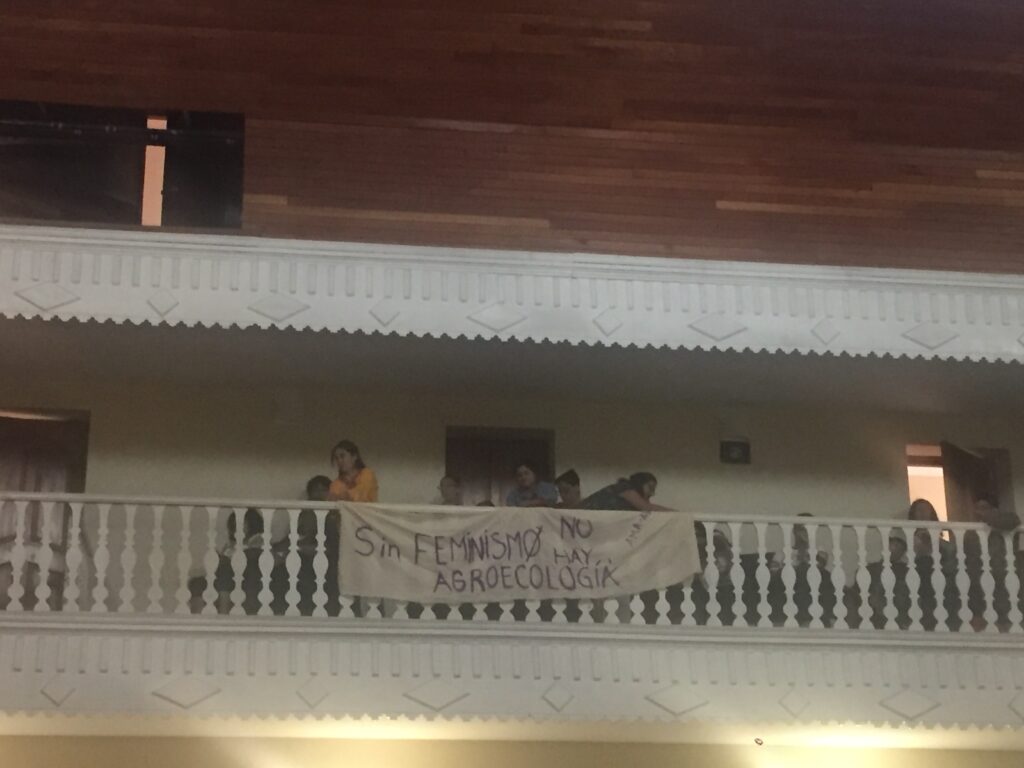
In Mexico, over 180 highly hazardous pesticides component are authorized, including many forbidden by international conventions (Bejarano González 2017). Glyphosate residues have been found in industrial corn tortillas and human bodily fluids. A Tsotsil midwife in her late 30s from a village near San Cristóbal, told me she remembered when as a child her father started using pesticides in the milpa (cornfield). His own father told him to stop, but the damage was already done. “Even though he does not use it anymore, there is contamination everywhere. Everything is contaminated.” When “everything” around is contaminated – by mines, pesticides, corporations – what does caring for one’s family and community look like?
Indigenous women at the crossroads of environmental and reproductive justice
Midwives across the continent position themselves as defenders of women’s right to choose how to give birth and as protectors all forms of life – human and nonhuman (Dennis and Bell 2020). Kichwa environmental activist Elvia Dahua, leader of the Confederation of Indigenous Nationalities of the Ecuadorian Amazon described this relationship in an interview for the Tejiendo Cuerpos Territorios (Weaving Body Territories) platform: “Us women, we are those who work the land. The first who chose the water to drink, to feed the children, the husband. This is why us, we know the value of mother-earth, how we can care for nature, how we can care for the earth, the territory, because the territory is our market, the territory is our pharmacy where we can find ancestral medicine.”[1] To express the intersection in which Indigenous women stand Katsi Cook, Mohawk Nation at Akwesasne midwife, coined the term environmental reproductive justice: “Environmental justice and reproductive justice intersect at the very center of woman’s role in the processes and patterns of continuous creation” (Cook 2007:62).
In Chiapas, Indigenous women have been at the forefront of the defense of the territory (Olivera Bustamante, Cornejo Hernández, and Arellano Nucamendi 2016; Valadez 2014). They draw on their multiple experiences as mothers, midwives, farmers and community leaders to raise awareness on the health and cultural consequences of environmental change. Midwives have a close relationship with their environment, in which they find medicine to cure their patients during pregnancy, childbirth and postpartum (Icó Bautista and Daniels 2021). During a meeting of midwives in Mexico, organizations from various countries of Abya Yala[2] shared a statement highlighting the importance of caring for all forms of life. Their discourse interwove the sacredness of birth and Indigenous peoples’ strong connection to the earth: “Caring for the way we are born means defending the sacred link that binds us to the earth […]. We fully trust women and their babies’ embodied knowledge and the strength of mother-earth. This is why we rely on its [natural] elements to maintain balance and put ourselves at the service of life and its cycles” (Consejo de Abuelas Parteras Guardianas del Saber Ancestral de México et al. 2018). Contamination threatens this balance in many ways. One of the forms I have documented in my research is the impact on medicinal plants, which midwives use on a daily basis.
Caring when plants disappear
For thirty-five years, the OMIECH has organized community health workshops in Indigenous communities of the state. The goal of the organization is to strengthen Indigenous medical knowledge. The Women and Midwives Section, coordinated by Micaela Icó Bautista, organizes community workshops focused on pregnancy, birth, postpartum and on common diseases in the communities (Icó Bautista and Daniels 2021). In these workshops, participants share how they cope with common illnesses, by sharing medicinal plant recipes, massage indications and spiritual ceremonies. Knowledge exchanged during workshops is then compiled into booklets that are shared back in the villages.

In 2014-2015, I helped organize some of the workshops. One of them took place in a community in the municipality of Huixtan, where Micaela Icó Bautista and I met with Doña Lupe, a Tseltal midwife in her 50s, and member of OMIECH. When we arrived, we followed the midwife and her son-in-law into the milpa behind the house, where they searched for medicinal plants that would be used as props during the workshop (Figure 3). As soon as the workshop started, participants listed the common diseases of women, men and children in the community. In the second part of the workshop, all were invited to share their knowledge about local remedies.
A few years later, in 2018, Micaela returned to the same village. When I met with her a few months later, she described how, during the workshop, older midwives like Doña Lupe recalled the chikin burro (“donkey’s ear,” a mix between the Tseltal word for ear, chikin, and the Spanish word for donkey, burro) a medicinal plant used during childbirth and postpartum.[3] Younger women were puzzled about the name, and started laughing, not knowing it was a medicinal plant. Micaela reported, “The parteras they said that before there were plenty of this plant, but now it is becoming scarce. In the hills, there are barely any left.”
In the workshop’s minutes, women attributed the disappearance of the chikin burro to a combination of factors, including deforestation linked to the construction of new roads, a shift in agricultural practices (from family-based to industrial), and the use of pesticides. Chikin burro was not the only plant affected, they added, “Plants like epazote, coriander, green tomato… They are disappearing. They used to grow in the milpa and now they don’t anymore, because of the pesticides. It all started 5 years ago, but only now they are realizing that it is hurting the earth.” During the workshop, Doña Lupe poignantly described the consequences of such a loss, saying, “it is like putting an end to part of community life.” The situation in Huixtan is not unique, and across Mexico Indigenous peoples experience how the loss of plants is also a loss of their language (Arriaga-Jimenez, Perez-Diaz, and Pillitteri 2018).
With disappearing plants, and the health impacts of environmental contamination, midwives are confronted to new diseases while their tools to cure are getting scarcer. For María del Carmen, a 38-year-old midwife who lived nearby the town of Comitán, and who started attending births when she was 17, “There have been changes in women’s health because of bad eating habits. Since childhood, they eat Sabritas (chips), candy, ham, cheese… This is not eating! In the past, we ate a lot of mushrooms from the forest. Not anymore. And women, they don’t even listen to us anymore. From there, complications arise: hemorrhage, miscarriage…”
During my work with Micaela Icó Bautista, I noticed the increasing trouble she faced in collecting recipes when editing the boletines; there were each time fewer people to share recipes, as older midwives passed away and some plants were more difficult to find. But she tirelessly asked midwives about their “secrets” (Icó Bautista and Daniels 2021), and encouraged them to start their own medicinal garden, to keep transmitting the knowledge which is essential for the health of women and their families, and the cultural reproduction of Indigenous communities.
Mounia El Kotni (PhD, SUNY Albany 2016) is postdoctoral researcher in anthropology at the Cems-EHESS Paris, and 2019-2021 Fondation de France grantee in environmental health (grant n. 00089806). She has conducted research on maternal health policies in Mexico, and the consequences on traditional midwives’ practices since 2013. Her current research is focused on the gendered politics of environmental contamination and environmental protest in Chiapas. Contact: www.mouniaelkotni.com
References
Arriaga-Jimenez, Alfonsina, Citlali Perez-Diaz, and Sebastian Pillitteri
2018 Ka’ux Mixe Language and Biodiversity Loss in Oaxaca, Mexico. Regions and Cohesion 8(3). Academic OneFile: 127-.
Bejarano González, Fernando, ed.
2017 Los Plaguicidas Altamente Peligrosos En México. Texcoco, Estado de México: Red de Acción sobre Plaguicidas y Alternativas en México, A. C. (RAPAM).
Consejo de Abuelas Parteras Guardianas del Saber Ancestral de México, Consejo de Abuelas Parteras Guardianas del Saber Ancestral de las Américas, Nueve Lunas S.C., Oaxaca, et al.
2018 Pronunciamiento. Foro “Partería, Cultura, Ancestralidad y Derechos”. Oaxaca, México.
Cook, Katsi
2007 “Environmental Justice: Woman Is the First Environment.” In Reproductive Justice Briefing Book; A Primer on Reproductive Justice and Social Change Pp. 62–63. Pro-Choice Public Education Project.
Dennis, Mary Kate, and Finn McLafferty Bell
2020 Indigenous Women, Water Protectors, and Reciprocal Responsibilities. Social Work 65(4): 378–386.
Icó Bautista, Micaela, and Susannah Daniels
2021 OMIECH: Traditional Maya Midwives Protecting Women’s Health. Cultural Survival Quarterly 45(1): 26–27.
https://www.culturalsurvival.org/publications/cultural-survival-quarterly/omiech-traditional-maya-midwives-protecting-womens-health
Olivera Bustamante, Mercedes, Amaranta Cornejo Hernández, and Mauricio Arellano Nucamendi
2016 Organizaciones campesinas y de mujeres de Chiapas. Movimiento Chiapaneco en Defensa de la Tierra, el Territorio y por el Derecho de las Mujeres a Decidir. Universidad de Ciencias y Artes de Chiapas, Centro de Estudios Superiores de México y Centroamérica.
http://repositorio.cesmeca.mx/handle/11595/877, accessed May 30, 2018.
Valadez, Ana
2014 Saberes Femeninos En El Ámbito Comunitario Campesino. Contrahegemonía, Defensa Del Territorio y Lo Cotidiano En La Lacandona. In Más Allá Del Femenismo. Caminos Para Andar. Márgara Millán, ed. Pp. 145–154. México, D.F: Red de Femenismos Descoloniales.
[1] Interview available at https://youtu.be/pzqkOdb76A4
[2] The Kuna word for territory, used by Indigenous activists to refer to the American continent in a decolonial position.
[3] I was not able to retrieve the Latin name of the plant.
